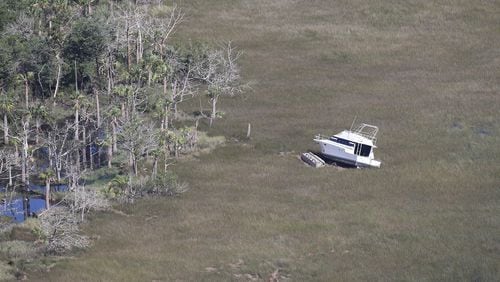Gov. Nathan Deal surveyed some of the areas hardest-hit by the remnants of Hurricane Irma on Thursday as the state grappled with the enormous recovery – and mounting cost – of cleaning up from the monstrous storm.
The governor surveyed felled trees and blocked roads in north Georgia’s mountains, and later was to visit flooded areas on the state’s coast in Brunswick and fly over metro Atlanta suburbs debilitated by the damage.
He told reporters at a stop in Cornelia that the storm “virtually covered the entire state and affected virtually every county” and warned of a slow cleanup process ahead. And he announced that the state would be providing tax relief to Irma’s victims in Georgia, though he had no immediate details.
“Everybody at every level of government is doing everything they can,” Deal said.
There’s no estimate yet on the cost of the storm cleanup, but state officials have already appealed to the federal government for financial help. Federal authorities declared a state of emergency in Georgia before the storm, and Deal asked for post-storm assistance after it pounded the state.
“We have made all of those requests for federal assistance, and I think we’ll see very favorable responses,” said Deal.
Irma slammed into Georgia on Monday, killing at least two people and knocking out power to more than 1.2 million people. Downed trees and flooding cut off scores of roads around the state and left parts of the coast swamped by seawater.
Florida bore the brunt of the storm, which killed at least a dozen people there and left vast parts of the state without power. Millions of evacuees who fled to Georgia and other states began to stream home this week, facing traffic and fuel shortages on their routes.
About the Author








